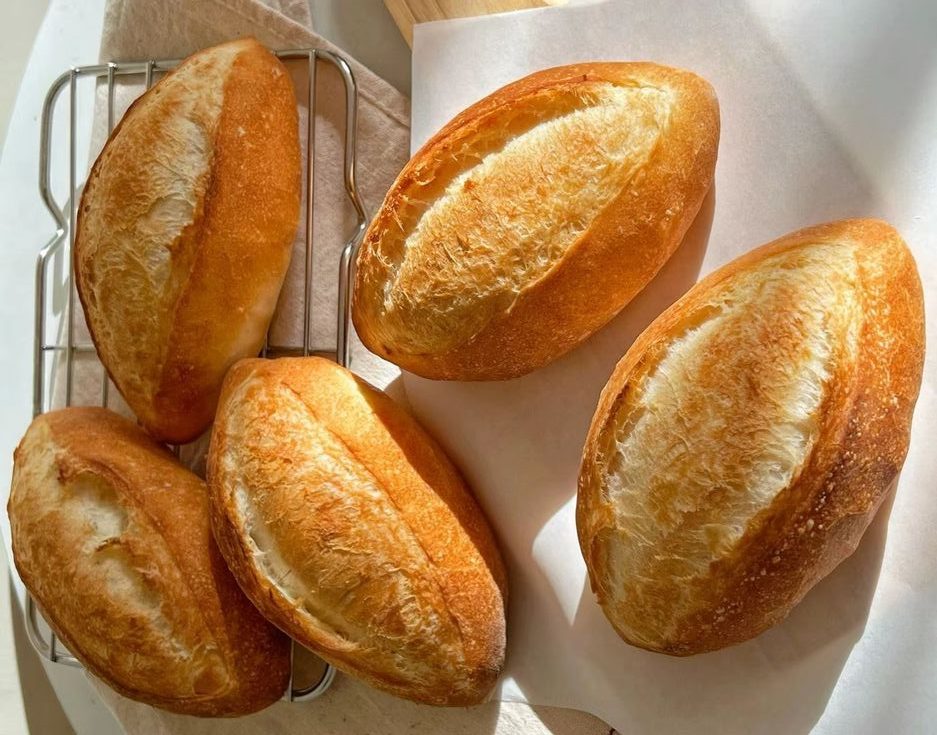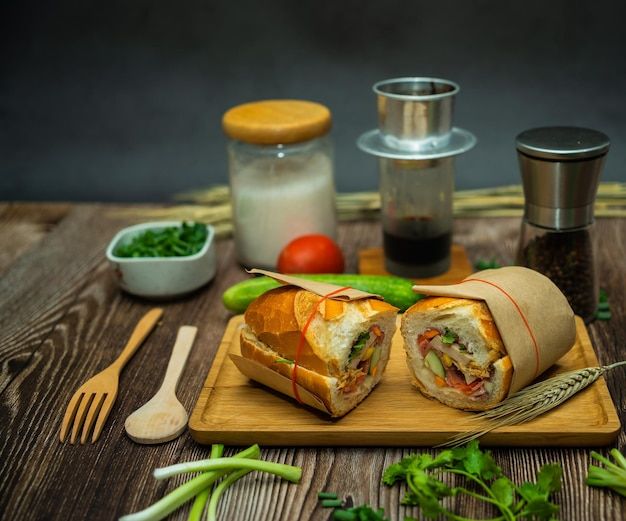Among countless Vietnamese dishes, Vietnamese banh mi holds a special place—simple yet remarkable, familiar yet filled with pride.
From early-morning street corners to bustling city avenues, the image of a warm, crispy loaf evokes memories of childhood, of home, and of the gentle beauty woven into everyday Vietnamese life.
More than a quick meal, banh mi has become a culinary symbol beloved by international friends—proof of Vietnam’s creativity and cultural harmony.
The Morning Aroma of Fresh Vietnamese Banh Mi
Anyone growing up in Vietnam has likely held a warm, fragrant banh mi on a busy morning.
The call of street vendors—“Bánh mì đây!”—the aroma of butter and pâté drifting through the air, the image of a worker eating while hurrying to their shift…
all paint a vivid picture of daily Vietnamese life.
Banh mi is not just food—it is memory, habit, and the heartbeat of everyday culture.

From French Baguette to Vietnamese Culinary Icon
Banh mi arrived in Vietnam in the early 20th century, introduced by the French as a long, dense, dry baguette.
But the Vietnamese—resourceful and delicate in their craft—transformed it into their own version: thin crispy crust, airy interior, and richly layered fillings.
Beyond butter and cold cuts, the Vietnamese banh mi evolved with pâté, pickled vegetables, herbs, chili, pork roll, and sweet-savory sauces—all perfectly balanced.
Each region adds its own character:
-
Saigon banh mi → bold flavors, abundant toppings
-
Hội An banh mi → compact, balanced, famously refined
-
Hanoi banh mi → nostalgic, simple, traditional
Each loaf tells a different story of local culture.

Why Vietnamese Banh Mi Captures the Heart
1. Simple yet never boring
With just a few familiar ingredients—a crispy crust, soft interior, creamy pâté, fresh herbs—banh mi delivers a surprisingly rich flavor profile.
2. Fast, convenient, and nutritious
Perfect for busy mornings, it offers a complete, satisfying meal within minutes—beloved by students, office workers, and tourists alike.
3. Affordable yet meaningful
No matter the income or background, everyone can enjoy a warm loaf.
It is a democratic food—humble, comforting, and shared across all walks of life.
4. A symbol of creativity
Vietnamese banh mi constantly evolves with new variations: vegetarian, cheese-filled, sunny-side-up, seafood, BBQ, and more—reflecting the endless creativity of Vietnamese cuisine.

Vietnamese Banh Mi in the Eyes of the World
It’s no coincidence that CNN, BBC, and global food magazines call banh mi “the world’s best sandwich.”
For international travelers, it is an unforgettable experience—a blend of East and West, of tradition and modernity.
Many global chefs describe it as
“the soul of Vietnamese street food”—a symbol of creativity, simplicity, and warmth.
How to Enjoy Vietnamese Banh Mi at Its Best
Try savoring it as locals do:
-
Eat it warm, when the crust is crispy and the fillings are aromatic
-
Pair it with iced milk coffee—Vietnam’s iconic breakfast duo
-
Explore creative variations: cheese banh mi, BBQ banh mi, vegetarian healthy banh mi
Each loaf carries a story of simplicity and love.

More Than Food — A Source of Vietnamese Pride
Beyond being a humble street dish, banh mi represents Vietnam’s ability to integrate global influences while preserving its authentic identity.
From street vendors to gourmet restaurants, from quick breakfasts to gifts for visitors, the golden loaf remains a warm, familiar part of daily life.
Small in size, big in meaning—simple yet soulful, humble yet filled with pride.
A dish, a story, a memory…
sometimes, just the scent of freshly baked bread is enough to bring Vietnam back to your heart.
